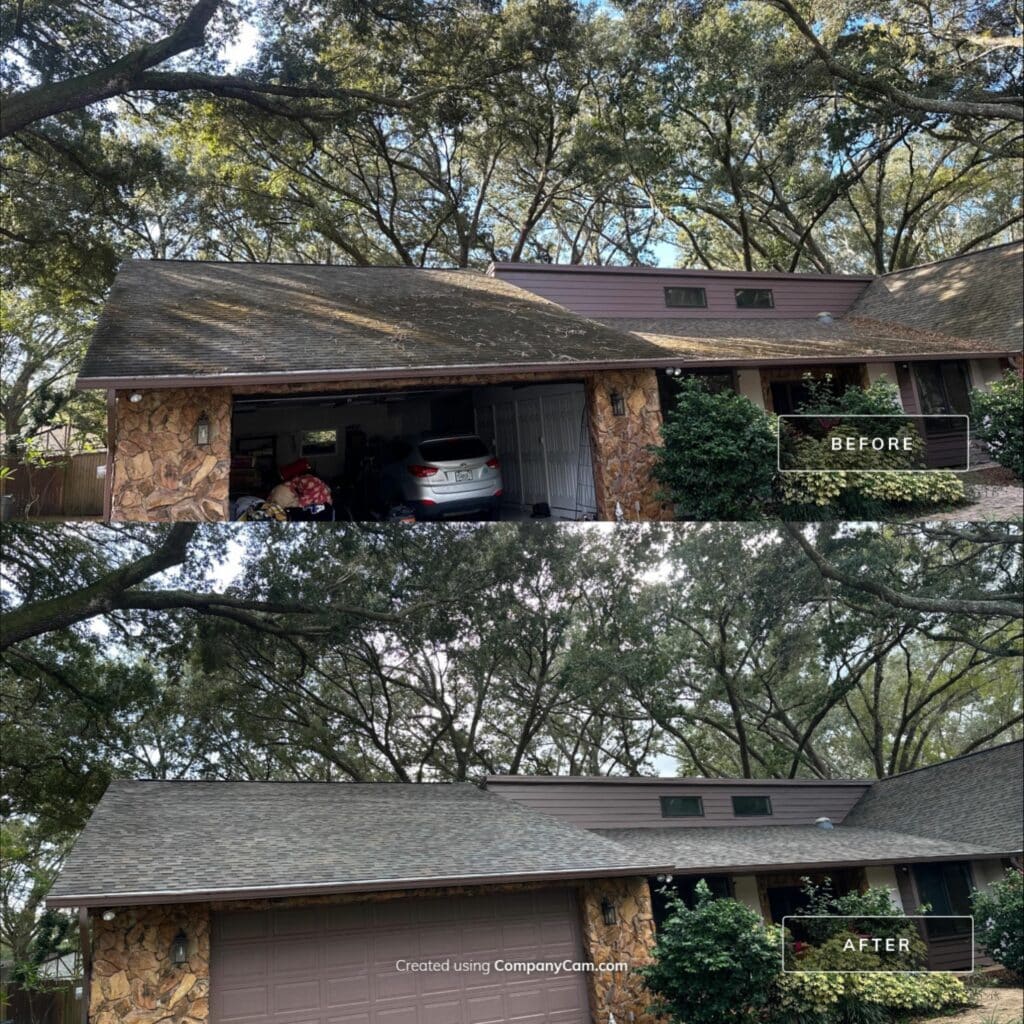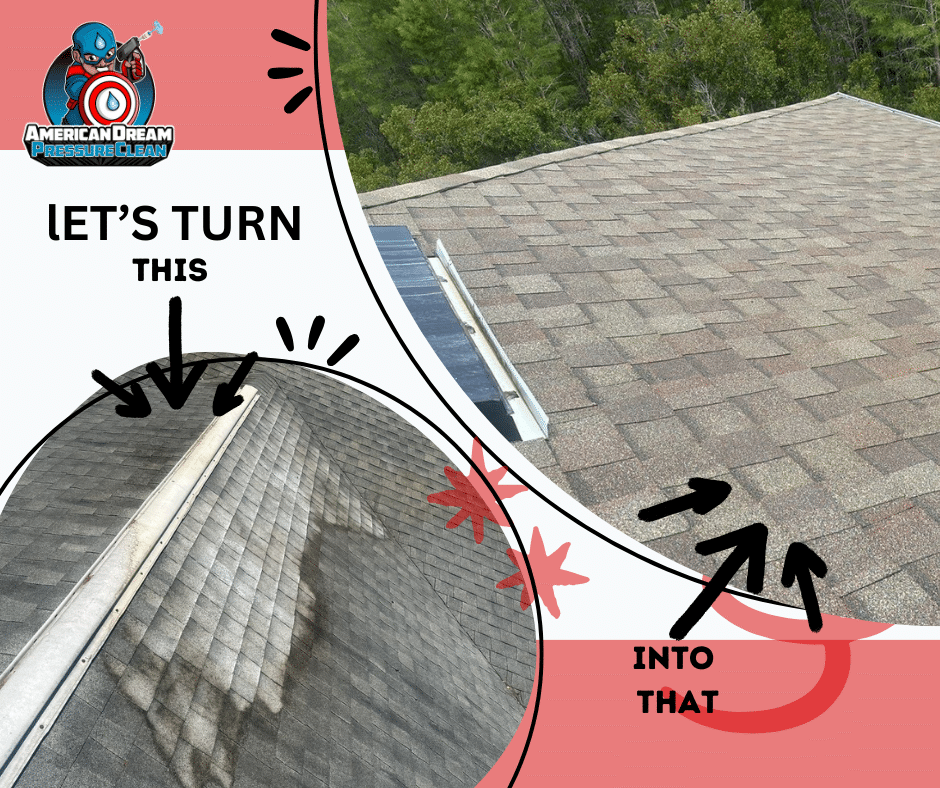Email Us
contact@adpressureclean.com
Mon - Sun: 8am - 8pm
Quotes Always Available!
(813) 822-5326
Give us a ring!
contact@adpressureclean.com
Quotes Always Available!
Give us a ring!
Residential Roof Washing: The Ultimate Guide to a Cleaner, Longer-Lasting Roof
When was the last time you thought about the cleanliness of your roof? While it’s easy to overlook, residential roof washing is a crucial aspect of home maintenance. Not only does a clean roof look appealing, but it also extends the lifespan of your roof, prevents damage, and saves you money in the long run. Let’s delve into the ins and outs of residential roof washing and discover why it should be on your home maintenance checklist.
What is Residential Roof Washing?
At its core, residential roof washing involves cleaning the roof of a house to remove dirt, debris, moss, algae, and other contaminants. Over time, these elements can build up, causing unsightly stains and potential damage to roofing materials. Residential roof washing employs various techniques to ensure your roof remains clean and in good condition, including pressure washing, soft washing, and chemical treatments.
Benefits of Residential Roof Washing
Extending Roof Lifespan
One of the primary benefits of regular roof washing is the extended lifespan of your roofing materials. Algae, moss, and lichen can eat away at your roof, leading to premature aging and the need for costly replacements. Keeping your roof clean helps preserve its integrity and functionality.
Enhancing Curb Appeal
A clean roof significantly boosts the curb appeal of your home. Whether you’re planning to sell or simply want to enjoy a well-maintained property, a spotless roof makes a positive impression. It’s like giving your home a facelift without the hefty price tag.
Preventing Damage and Costly Repairs
Regular roof washing can prevent the accumulation of debris and organic growth that might otherwise lead to water damage, leaks, and structural issues. By maintaining a clean roof, you’re essentially performing preventive maintenance that can save you from expensive repairs down the road.
Common Roof Washing Techniques
Pressure Washing
Pressure washing uses high-pressure water to remove dirt, grime, and moss. It’s effective but can be harsh on certain roofing materials if not done correctly. This method is best for durable, sturdy roofs.
Soft Washing
Soft washing employs low-pressure water mixed with specialized cleaning solutions to gently clean the roof. This method is ideal for delicate roofing materials like shingles and tiles, as it minimizes the risk of damage.
Chemical Treatments
Chemical treatments involve applying specially formulated cleaners that target and dissolve algae, moss, and lichen. These treatments are often used in conjunction with soft washing to ensure a thorough clean without harming the roof.
DIY Roof Washing vs. Professional Services
Pros and Cons of DIY
Taking on roof washing yourself can save money, but it comes with risks. Climbing onto the roof can be dangerous, and without the right equipment or knowledge, you might inadvertently damage your roof.
Advantages of Hiring Professionals
Professional roof washers have the experience, tools, and safety equipment to clean your roof effectively and safely. They know the best techniques for different roofing materials and can spot potential issues before they become major problems.
Cost Comparison
While professional services come at a cost, the investment is often worth it for the peace of mind and quality results. DIY methods may be cheaper upfront but can lead to costly mistakes and repairs if not done correctly.
Safety Tips for Roof Washing
Personal Safety Measures
Always wear appropriate safety gear, including non-slip shoes, gloves, and eye protection. Use a sturdy ladder and ensure it’s on stable ground. Never attempt to wash your roof in wet or windy conditions.
Environmental Considerations
Choose eco-friendly cleaning solutions that won’t harm your landscaping or local wildlife. Avoid letting chemicals run off into storm drains or water sources.
Using the Right Equipment
Ensure you have the proper tools for the job, whether it’s a pressure washer, soft washer, or chemical sprayer. Using the right equipment not only ensures a thorough clean but also helps protect your roof from damage.
Conclusion
Regular residential roof washing is an essential aspect of home maintenance that offers numerous benefits. From extending the lifespan of your roof to enhancing your home’s curb appeal and preventing costly repairs, keeping your roof clean is a wise investment. Whether you choose to tackle the task yourself or hire professionals, understanding the importance and methods of roof washing will help you make informed decisions and keep your home in top condition.


Our Service Area
American Dream Pressure Clean
Tampa, FL 33617
(813) 822-5326
Service Area:
Tampa, St Petersburg, Wesley Chapel, Brandon, Land O’ Lakes, Lutz, Apollo Beach and surrounding areas